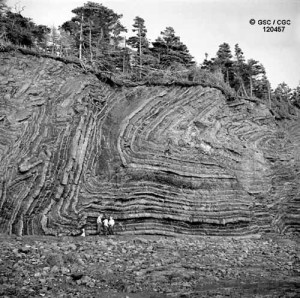This past Tuesday night I watched the “debate” between Ken Ham, founder of Answers in Genesis, and Bill Nye, television personality and comedian. I placed “debate” in parentheses because the event was not really a debate but a co-presentation of views. Bill Nye argued against the world being created by God and against the Bible and Ken Ham defended creation science as a legitimate way to understand the world. This article is just my brief assessment of that presentation.
First, while I think Ken Ham presented a cogent case for creation science, especially in his main presentation, I think he could have done more and been more aggressive in the shorter answers. But maybe that is not his style, I don’t know. Nevertheless, there were openings that Nye left that Ham did not fully exploit.
Second, from the start, Bill Nye used emotive and pejorative language to stealthily attack Mr. Ham and creation science. For instance, he constantly described creation science as “Mr. Ham’s view” but his own view as “mainstream science.” He would stretch out his hands toward the outside of the building, and talk about the outside world of mainstream science, as if the creation museum and creation science were divorced from both science and reality. Even when he presented a slide stating the proposition under debate, “Is creation a viable model of origins in today’s modern, scientific era?” his slide called it “Ken Ham’s creation model.” The implication is that there are many creation models and that they are all different because they are not science. Real science, on the other hand, according to Nye, is unified in adoption of evolution because there is no disagreement about it.
Of course, this just isn’t so. There are probably just as many evolution models as there are scientific creation models. On any given issue, there are many theories offered as possible solutions to problems faced by evolutionists. As Ham later pointed out, while there may be different theories about how a certain creation fact came to be, there is no disagreement about the fact of creation. Ham could have asked Nye whether he accepted panspermia, promoted by Hoyle, or spontaneous generation, or punctuated equilibrium, promoted by Gould, Darwinian evolution, or Neo-Darwinism, or Lamarckiansim, or Emication, etc., all of them offering different takes on evolutionary thinking.
Nye immediately tried to brush aside the distinction between “historical science” and “observational science” and said “These are constructs unique to Mr. Ham. We don’t normally have these anywhere in the world except here. Natural laws that applied in the past, apply now.” First, the affirmation of uniformitarianism does not refute the distinction between “historical science” and “observational science.” Even if laws that apply now applied always in the past, that wouldn’t mean that we could infallibly know what happened in the past. For instance, there are unsolved crimes.
Second, even evolutionists admit rate changes over time. The National Geographic Magazine asserted that “Explosive population growth is driving human evolution to speed up around the world, according to a new study.” The article went on to say that “The pace of change accelerated about 40,000 years ago and then picked up even more with the advent of agriculture about 10,000 years ago, the study says.” If evolution rates can change, why appeal to uniformitarianism as evidence that there is no difference between “historical science” and “observational science”? What was happening 10,000 years ago was not even the same as what was happening 40,000 years ago, according to evolutionists themselves.
Creationists acknowledge that laws currently in force were active in the past, as well. Creationist believe this because they understand that there is a lawgiver who established these laws of nature. Creationists also accept catastrophism, the idea that there have been unique, catastrophic geological events which impacted the earth’s history. Evolutionists have now also come around to understand this, as well. What evolutionists, naturalists, and materialists reject is the idea that there is a God who might have influenced the history of the world. Dr. Scott C. Todd exemplifies the evolutionists attitude toward God: “Even if all the data point to an intelligent designer, such an hypothesis is excluded from science because it is not naturalistic” (written to the journal Nature). So it doesn’t really matter that there is evidence for creation, they won’t accept it anyway.
There are many things Bill Nye never addressed. Bill Nye never addressed the creation scientists that Mr. Ham referenced who were fully credentialed, peer-reviewed scientists who were published in journals Mr. Nye would accept as legitimate, owned and operated by evolutionists.
Bill Nye never answered Ken Ham’s questions, any of them, as I recall, but especially the question: “Can you name one piece of technology that could only be developed by starting with a belief in molecules-to-man evolution? From Nye there was not a word about this.
Bill Nye could not answer why there are morals nor could he refute the fact that belief in evolution has had a deleterious effect on the morals of our society.
Nye could not answer where consciousness came from.
Nye began his main presentation by arguing that there are “layer upon layer upon layer of limestone” that “took millions of years” to form. He asked “How could those animals have lived their entire life and formed these layers in just 4,000 years?” Of course, he did not present proof of millions of years. He just asserted that this is what “mainstream” science states. But assertion is not argument. Nor did he even try to deal with what creation science would say about this and try to demonstrate how it would not be viable, which is, after all, what the proposition demanded he do.
He offered ice core samples as evidence of long periods of time, never once addressing how creationist post-flood, ice-age models could account for the data. In a post-flood environment, huge snowstorms with great oscillations in temperature and other factors could account for the observed striations. Ken Ham did mention the airplanes which were found buried under 250 feet of ice. In trying to disregard this evidence one old-earth proponent said this: “the lost squadron crashed in a relatively warm area of southern Greenland where, unlike the sites of the three deep ice cores, several melts and refreezings per year can occur and seven times as much snow falls per year.” Exactly! If more snow and several thaws and refreezings can happen there, why cannot that also explain ice-core samples indicating age in other places. After all, isn’t the present the key to the past?
He offered the age of bristle cone pines as another indicator that the earth has been here a long time. He offered as an example Old Tjikko in Sweden as the oldest tree at 9,500 years old. He asked “How could these trees be here if there was an enormous flood just 4,000 years ago?” He did not say that Old Tjikko was dated that way by C-14 dating the roots, and C-14 dating has its own assumptions. The oldest living tree is the bristle cone pine in the Inyo National Forest in California at about 4,700 years. This accords nicely with the date one would expect a tree to have if there was a flood 4,500 to 5,000 years ago, as the Bible teaches there was. In fact, the real question is, why aren’t there trees that are older if the earth is as old as they claim?
He offered the layers of rocks in the grand canyon as proof of an old earth. He said, “This is what geologists on the outside do. Study the rate at which soil is deposited.” Again, this was an attack on the credibility of the scientists who are creationists, suggesting that they don’t know what science is.

He also said, “If there was this enormous flood that you speak of, wouldn’t there have been churning and bubbling and broiling. How would these things have settled out?” I know he knows of rock formations which are twisted and folded. Just do a search on any internet search engine for “folded rock” formations. He then stated, “Your claim that they settled out in an extraordinary short amount of time is for me not satisfactory.” But his “wants” do not amount to proof. Furthermore, his statement that if there was a worldwide Noachian flood you would expect all rock layers to be uniform shows his lack of understanding how science works.
He then states, “And by the way, if this great flood drained through the Grand Canyon, wouldn’t there have been a Grand Canyon on every continent.” This not only shows his lack of understanding of the science of the flood, but a lack of logic. The question could be asked of him, “If a river flowing continuously for millions of years caused the Grand Canyon, wouldn’t there be Grand Canyons on all the continents since there are rivers on all continents?”
He offered the fossil record as proof that the creation model is not a viable scientific theory. But the fossil record rather than contradicts the creation account supports it. There are no transitional fossils from one kind to another. Everywhere you look there are fully formed animal kinds. He said you don’t find fossils of one strata mixing with the fossils of another strata. Actually, there is evidence of dinosaurs and man living together (e.g., Glen Rose, TX and paintings of dinosaurs) but this proof is always rejected out of hand because it doesn’t fit their theory.
I will continue this review in another post.
Eric L. Padgett


